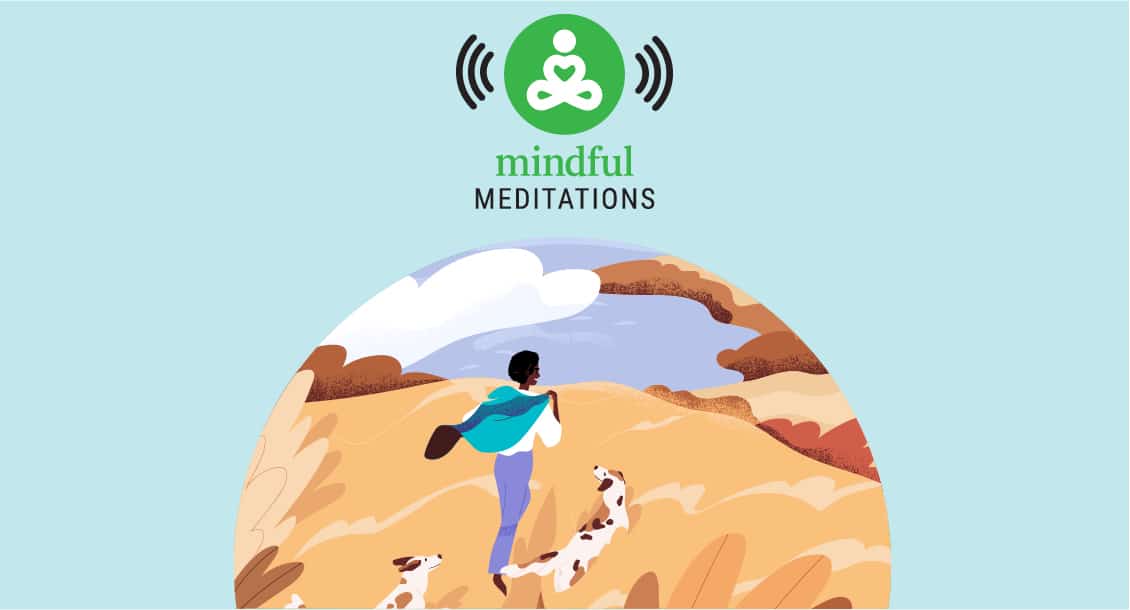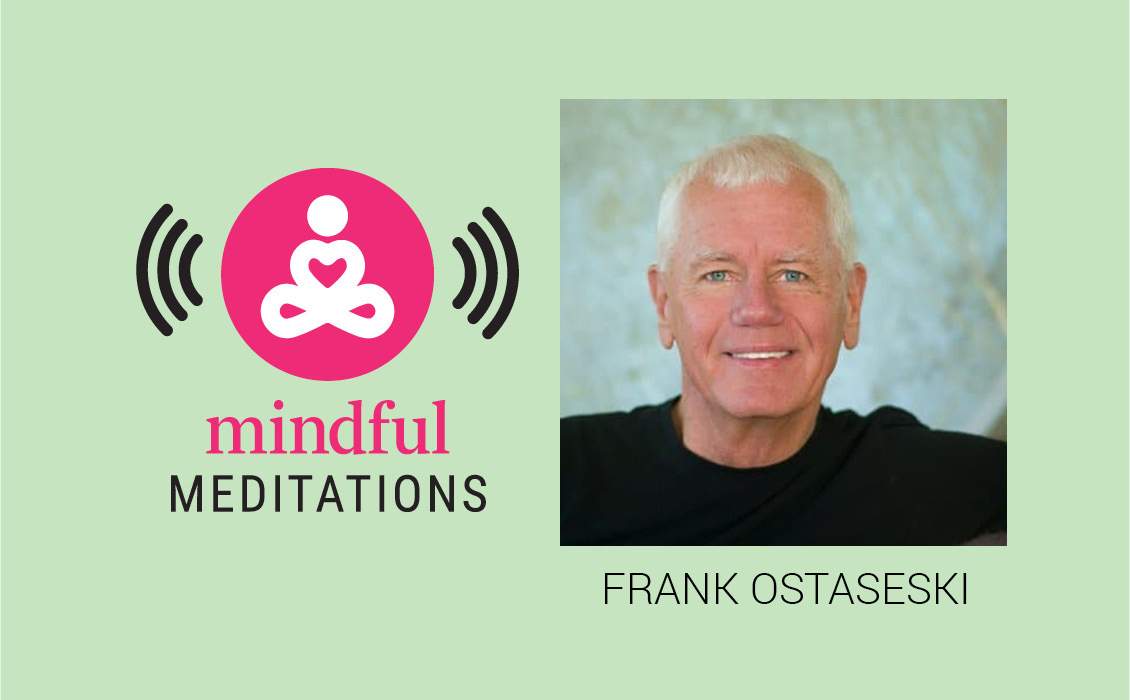For many of us, meditation is often done eyes closed. And yet when we’re outside in nature, and also just in our life, our eyes are open. And it’s really important to learn how to stay present when our eyes are open.
So I’m going to be teaching a practice that’s a beautiful way to cultivate a sense of presence and awareness in nature—with the eyes open—that you can apply anywhere, from sitting at your desk, sitting in a room, to looking at a vast landscape of sky, ocean, mountains. I call it a soft-gaze meditation.
When the eyes are open in meditation, we’re not looking like we might, for example, look at a leaf, or a phone screen. We’re not studying and analyzing what we’re looking at. Instead, it’s a very soft, relaxed, receptive, open gaze.
Practicing a Mindful Soft Gaze
This practice of mindful seeing, soft gaze, we’re receiving through the eyes in the same way we receive through the ears when listening. When we listen, we don’t do listening. Listening happens by our simply being open and aware of sounds. The same is true with this seeing practice. We’re not doing seeing; we’re not looking as though through a set of binoculars. We’re simply having the eyes open and soft. So the eyes are more like windows in this meditation, passive recipients of whatever visual stimuli, light, color, etc., happen to be there.
One of the reasons I teach this practice is because it’s a very quick doorway into a sense of embodied presence. When the eyes are soft and the gaze is relaxed, it helps relax the body and the nervous system. And there’s a sense of immediacy and connection with, in this case, the visual field.
So whether you’re doing this indoors or outside, the practice is the same. If you’re outside, of course, there’s more range of experience to take in. If you’re indoors, ideally, you’re looking at something that’s quite plain such as a wall or a plain carpet.
Broadening Your Perspective
Having a wide-angle lens and a sense of peripheral vision assists us with this soft-gaze practice. One way to prime that broader perspective is to lift both hands in front of you, with index fingers pointed upward, and widen the distance between the hands until your upright index fingers almost disappear from your peripheral view. So now you’re just aware of both hands, both fingers.
Then release the hands down to a resting position on your lap. This little preparation exercise helps us maintain the soft, wide-angle gaze. You can draw on that simple practice as you do this meditation.
Cultivating a Sense of Presence and Awareness
Watch the video:
Listen to the Audio:
Cultivating a Sense of Presence and Awareness
Follow the Practice:
- Begin by finding a comfortable posture and then lowering your gaze. Sitting with a sense of ease, relaxation, feeling that connection of your body with the ground, with the earth. Just closing the eyes to begin, sensing your body sitting, sensing your posture. Take a few mindful breaths, and be aware of the soundscape that’s all around you.
- And then opening your eyes softly, slowly, gently. Have the gaze looking down, maybe four or five feet in front of you. Relax the eyes. Soften the gaze. Cultivate that sense of receiving through the eyes. Ideally, you have a wide-angle vision, so you’re seeing peripherally and everything in between: a wide-angle view. And in this practice, try not to lose touch with the sense of your body sitting, with the sense of your breath and the sounds. We’re just adding this important layer of experience of seeing, becoming aware of what it is you’re seeing: color, light, shape, form. We’re seeing and being aware of seeing—being mindful that seeing is happening.
- Now I’m going to invite you to shift your gaze from the lowered-gaze position to just looking straight ahead. Notice how that changes your experience. The more we lift the eyes, the more energizing the practice. And then shifting your gaze again, so you’re looking upwards at the sky, at the canopy, at the ceiling, stars. And again, noticing how that changes the energy, your attention.
- And then letting your gaze rest wherever is most comfortable, which is often just below the horizon: looking straight ahead, but a little down. As we lower the gaze, it relaxes the eyes, it relaxes the nervous system; it supports a little more concentration.
- If you find in this practice the eyes are getting tired, or you’re getting distracted by the visual field, then take a moment to close your eyes. Feel your breath. Sense your body, wherever your body is touching the ground.
- And then, in your own time, open the eyes again. Soft gaze. Relaxed. Seeing and aware of seeing. As you do this, particularly when doing this outside, be aware of how the visual field affects you, touches you—the color, the light, the forms—how it can support staying really connected and tethered to the present moment.
- And as you bring this practice to a close, again, just noticing the impact or the influence of this practice.
As we deepen in our meditation practice, we learn to use a variety of methods, tools, techniques, practices—it’s like we’re building a toolkit. So, we have a wider range of resources to draw on, depending on where we are and what’s needed.
The practice of seeing meditation, then, this soft-gaze practice, as I like to call it, is one of those practices in your tool bag that you can use—particularly when you’re in situations where it’s not appropriate to sit, eyes closed, in meditation. For example, if you’re in the office, or at a conference.
But you can do this practice where you simply lower your gaze and cultivate this quality of attuned attention through seeing. And it’s a lovely support for this quality of meditative awareness that we can develop through mindfulness.
explore session #3
A Grounding Practice to Focus Your Busy Mind
Meditation is often done eyes closed. Soft-gaze meditation can broaden our visual field and encourage an open, receptive quality of attention.
Read More
more mindful meditations
Fearless Open-Hearted Awareness with Frank Ostaseski
In this four-part series, you’ll explore your relationship to endings without any judgment or criticality.
Read More
Nourish Compassion with Vinny Ferraro
In this four-part series, you’ll discover the power of compassion and explore how it can help you connect more deeply with both yourself and others.
Read More




